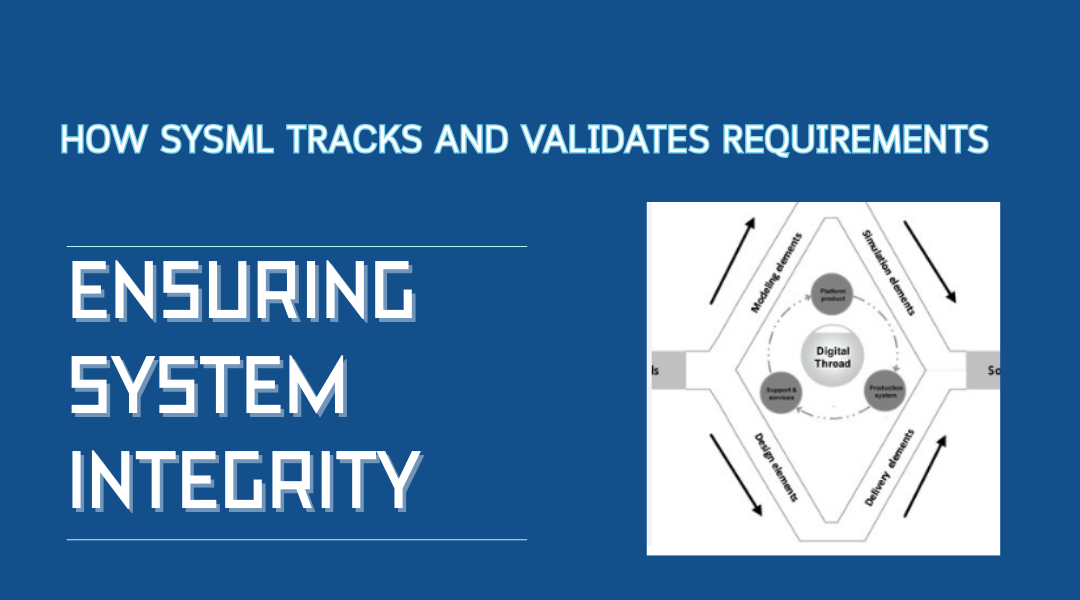Building a complex system isn’t just about designing components—it’s about ensuring every piece aligns with the original requirements. Without clear traceability, critical needs can slip through the cracks, leading to costly redesigns or system failures. SysML’s requirements diagrams provide a structured way to track, verify, and validate that the system does what it’s supposed to do—no guesswork involved.
In this section, we’ll break down how SysML keeps requirements tightly linked to design, testing, and final implementation, ensuring nothing gets lost in translation.
1. Why Traceability Matters in System Design
Imagine building a smart home system where a requirement states: “The system must detect intruders and alert the homeowner within 5 seconds.” Sounds simple, right? But if this requirement isn’t explicitly tied to motion sensors, alarm triggers, and notification logic, it might never work as intended.
Traceability in SysML ensures that every requirement is visibly connected to the design elements that fulfill it, the tests that validate it, and any derived sub-requirements that refine it. This isn’t just bureaucratic documentation—it’s a safeguard against misalignment.
Key Aspects of Traceability:
- Forward Tracking: Following a requirement from its origin to its implementation.
- Example: A requirement for “remote thermostat control” should link directly to the HVAC module in the system design.
- Backward Tracking: Tracing a system feature back to its originating requirement.
- Example: If a “voice command module” exists in the design, backward traceability confirms it fulfills a documented user need.
- Horizontal Links: Ensuring related requirements (like security and user access) stay synchronized.
- Vertical Decomposition: Breaking high-level goals (e.g., “ensure home safety”) into detailed specs (e.g., “trigger alarms on broken glass detection”).
Without these links, teams risk building features nobody asked for—or worse, missing critical ones.
2. How SysML Makes Traceability Visual
SysML doesn’t just describe traceability—it shows it. Using relationships like:
- Satisfy → “This software module fulfills Requirement X.”
- Derive → “Requirement Y was expanded from high-level Requirement Z.”
- Refine → “This use case provides the detailed steps to meet Requirement A.”
- Verify → “Test Case 5 confirms Requirement B works as intended.”
These aren’t abstract concepts; they’re direct, visual connections in requirements diagrams.
Real-World Example: Automotive Safety System
- Requirement: “The car must apply emergency braking if an obstacle is detected within 2 meters.”
- Design Link (Satisfy): Connected to the Collision Avoidance subsystem.
- Test Link (Verify): Tied to a simulated test where the car stops before hitting a dummy obstacle.
If the test fails, engineers can immediately trace back to the requirement and design—no digging through disjointed documents.
3. Verification: Proving the System Works
Traceability is useless if you can’t confirm the system meets its requirements. That’s where verification comes in.
Methods to Validate Requirements:
- Testing: Directly checking functionality (e.g., “Does the medical device sound an alarm when vitals drop?”).
- Analysis: Using simulations or calculations (e.g., “Does the bridge design handle 150 mph winds?”).
- Inspection: Manual review (e.g., “Does the UI match the approved mockups?”).
- Demonstration: Live proof (e.g., “Show that the drone avoids obstacles in real time.”).
In SysML, the Verify relationship explicitly ties requirements to their validation method.
Example: Smartwatch Battery Life
- Requirement: “Battery must last 48 hours on a single charge.”
- Verification: A Verify link to “Test Case 14: Continuous usage until shutdown.”
- Result: If the test only reaches 36 hours, the team knows exactly where to focus improvements.
4. Avoiding Pitfalls with Requirements Diagrams
A well-structured SysML model prevents common project disasters:
- “Why is this feature here?” → Backward traceability shows which requirement justified it.
- “Was this requirement tested?” → Verify links highlight gaps in validation.
- “What’s impacted if we change this component?” → Forward traceability reveals downstream effects.
Case Study: Industrial Robot Arm
- Original Requirement: “The arm must position parts within ±0.1mm accuracy.”
- Derived Requirement: “The motor controller must correct for backlash.”
- Verification: Linked to laser calibration tests.
When a supplier changed the motor type, the team immediately saw—via traceability—that recalibration tests were needed. Without SysML, this might have been caught too late.
5. The Bottom Line: Traceability Saves Time and Money
SysML’s requirements diagrams aren’t just paperwork—they’re a dynamic map of the system’s DNA. By visually connecting requirements to design and testing, teams can:
- Prevent oversights (no more “We forgot that feature!”).
- Speed up audits (regulatory compliance becomes straightforward).
- Simplify troubleshooting (failures trace back to root causes faster).
Whether you’re building a satellite or a coffee machine, traceability ensures the final product does what it’s supposed to—without expensive rework.
Final Thought:
A system’s success isn’t just about how well it’s built—it’s about how well it’s tracked. SysML turns vague intentions into provable results.
